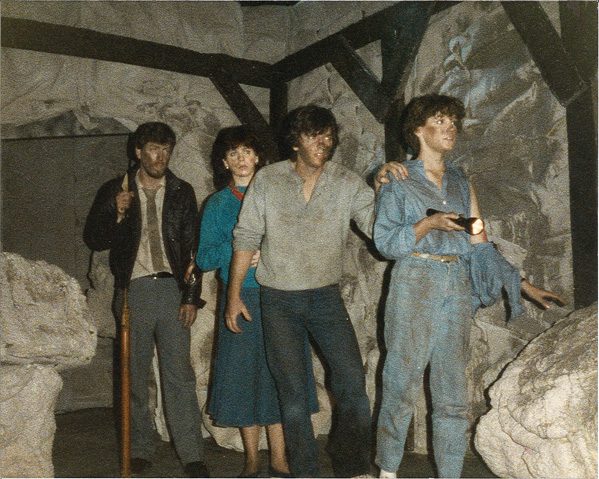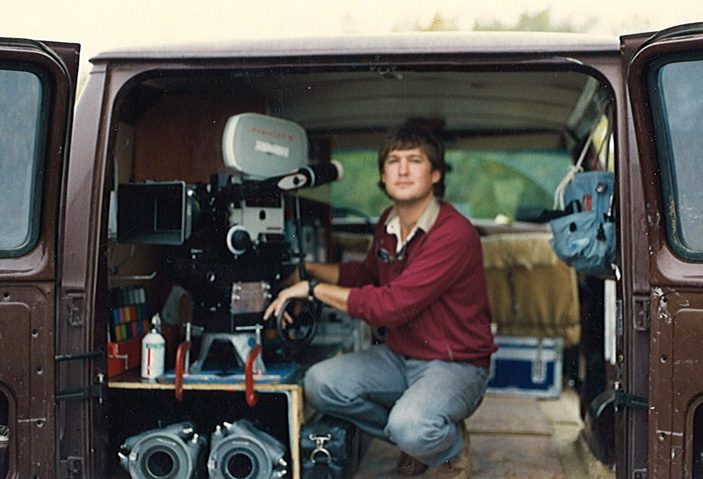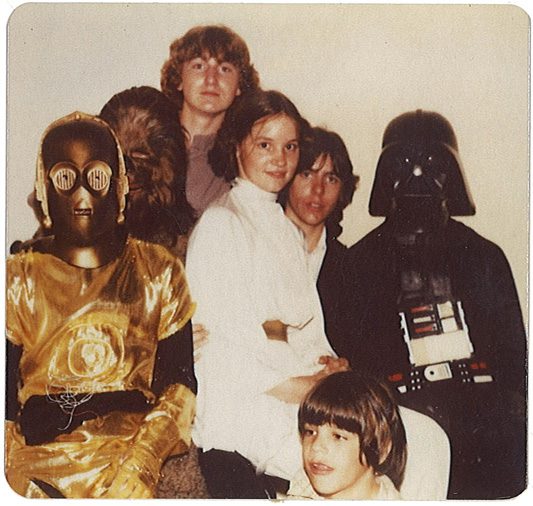
Photos courtesy Shelly Reynolds.
In the course of her job as an accounting analyst at a Tulsa-area oil and gas company, it’s very unlikely that Shelly Reynolds comes in contact with many people who know of her cinematic past. To put it another way, most of her business acquaintances might be surprised – or even shocked – to know that a generation ago she starred in a science-fiction-horror feature that has gained an underground cult following.
That picture is Mutilations, a direct-to-video movie shot in Tulsa and released nationally in 1986. Under her maiden name of Shelly Creel, Reynolds played the lead ingénue, one of the few survivors of a ferocious attack by an alien presence that’s also been mutilating cattle in the area. (The idea of alien-induced cattle mutilation, which some took as fact, was so big in the ‘70s and ‘80s that even MGM got into the act, releasing the mutilation-themed Endangered Species – featuring Robert Urich, JoBeth Williams and Oklahoma-native stars Hoyt Axton and Gailard Sartain – in 1982.)
Spring 2016 will mark the 30th anniversary of Mutilations’ two-week shoot. With that in mind, Reynolds wants to see how many people from the film’s cast and crew she can get together for a reunion. It’s an idea she came up with after talking to members of Tulsa’s Hixenbaugh family, whom she has known since well before the Mutilations shoot.

“Norman Hixenbaugh and I were in band together at Edison Junior High, and I graduated from Edison High School with his brother Matthew,” she explains. “We all knew each other – we were kind of the geeky people, the computer-club kind of kids – and we became friends.
“Their mother, Annette Hixenbaugh, did a lot of charity work. One year, she was involved with the March of Dimes and had a booth at the Tulsa fair. There were a lot of other charities to compete with, so to get people’s attention she dressed her sons up as characters from Star Wars. People came flocking to her booth. They just loved those characters.”
Soon, the Hixenbaughs formed a Star Wars troupe, appearing in costume at birthday parties and charity events.
“They all created their own outfits,” Reynolds recalls. “At first, Mrs. Hixenbaugh was the Leia character, but then she said, ‘Let’s get some of your friends from school to do this.’ So I became Princess Leia, with the bun in my hair and all that. It was really their costuming, though, that made it work.”
Since all of the principals were still in high school at the time, they usually did their Star Wars appearances only on weekends. Sometimes, they would enact scenes from the movie. Other times, they’d simply appear as the characters and interact with the audience. Of their dozens of gigs, Reynolds remembers one in particular: It was for the Perinatal Carnival at Tulsa’s Saint Francis Hospital, and the whole crew was flown in via helicopter.

Meanwhile, tremors had begun shaking up the entire movie industry – and the epicenter of the quake was Tulsa. In 1985, Bill Blair of the Tulsa-based video distributor United Entertainment (now VCI) and the husband-and-wife production team of Christopher and Linda Lewis had unleashed a little horror film called Blood Cult. What was revolutionary about it was that they eschewed a theatrical release, concentrating solely on the video market – making Blood Cult the first-ever made-for-home-video feature. Its huge return inspired other area filmmakers to see about getting in on some of that action, and one of them was a man named Larry Thomas, the producer, director and writer behind Mutilations.
“Annette Hixenbaugh knew Larry, and when Larry decided to shoot his movie, he went to her and said, ‘I’d really like to have a group of kids who know each other, who don’t have to figure out how to work with each other because they’ve already done it. I’d like your group of kids.’
“We were young adults by then,” Reynolds continues. “I was 20 years old. Matt Hixenbaugh was already cast, and Larry kept calling me, saying, ‘Shelly. Just look at the script,’ and I was thinking, ‘Oh, my goodness, what’s going on here? This is weird. I’m not an actress.’
“I finally looked at the script, and I thought it was kind of funny. But Larry said, ‘No, no, no. It’s serious.’”
Finally, she remembers, she and some of the others recruited from the Star Wars troupe figured “this could be a really good cult-classic kind of thing.”[pullquote]I always say if it wasn’t for [Star Wars creator] George Lucas and Larry Thomas, we never would’ve met.[/pullquote]
“I drug my heels a little bit,” she adds, “but I ended up saying yes. That was in the fall of ‘85, and then we started shooting around March of ‘86.”
In the movie, an astronomy professor (Al Baker) and his girlfriend (Katherine Hutson) take a group of students on a field trip to investigate a possible meteor landing. Instead, they encounter a mutilated cow (done in stop-motion animation by Texas-based effects creator John Fischner) and a UFO attack. Comedy relief comes in the form of a pair of guys who run a remote diner (Bill Buckner and Harvey Shell) and shoot at the aliens with shotgun shells stuffed with biscuits. Also on hand is a creepy old guy (John Bliss) in a deserted house who rambles a lot about the Book of Mormon between monster attacks.
During the shoot, Reynolds says, “I learned the meaning of ‘hurry up and wait.’ We’d hurry around, get into makeup, meet up and then wait for some of the sets to be built. Eight hours later, it was like, ‘I’m tired. I’m starving.’ Long hours – but it was fun.”
Something that made it especially memorable for her was the participation of cameraman Brett Reynolds, who was a principal at the time with Tulsa’s Take One Productions. As he recalls, he came in, in the middle of production “to help out,” bringing along a state-of-the-art Panavision camera.
“The first time I saw Brett was when we were filming the diner scene,” says Reynolds. “We’d just come in after being terrorized by the alien, and we were all sitting around a table. I thought Brett was one of the best-looking guys I’d ever seen – but I didn’t know if he thought I was all that,” she adds with a laugh.
He did, though, enough to eventually propose.
“Every time I turned around, Shelly was smiling at me,” he remembers, chuckling. “So I smiled back, and the rest is history. I always say if it wasn’t for [Star Wars creator] George Lucas and Larry Thomas, we never would’ve met.”
Brett has stayed in the business, shooting a number of movies – including the 1999 Tulsa-based production Chillicothe, which played the Sundance Film Festival – and music videos, traveling the world with contemporary Christian artists like Michael W. Smith and working as a lighting director for ESPN. Following Mutilations, Reynolds starred in Larry Thomas’s The Change, a drama with horror overtones that has yet to find a distributor. Except for a small role as a waitress in Chillicothe, she hasn’t otherwise been involved in movie acting.
Reynolds has, however, remained in contact with the Hixenbaugh family, who not only got her started on the path to Mutilations, but was also involved in it themselves.
“We talk pretty frequently, and we realized that it’s been 30 years, and it’d be really good to reach out to the rest of the cast and crew, get their take on things, have fun – and laugh,” she says. “If we have nothing else, we have good memories.”
Those who worked in any capacity on Mutilations can contact Shelly Reynolds at [email protected].


























